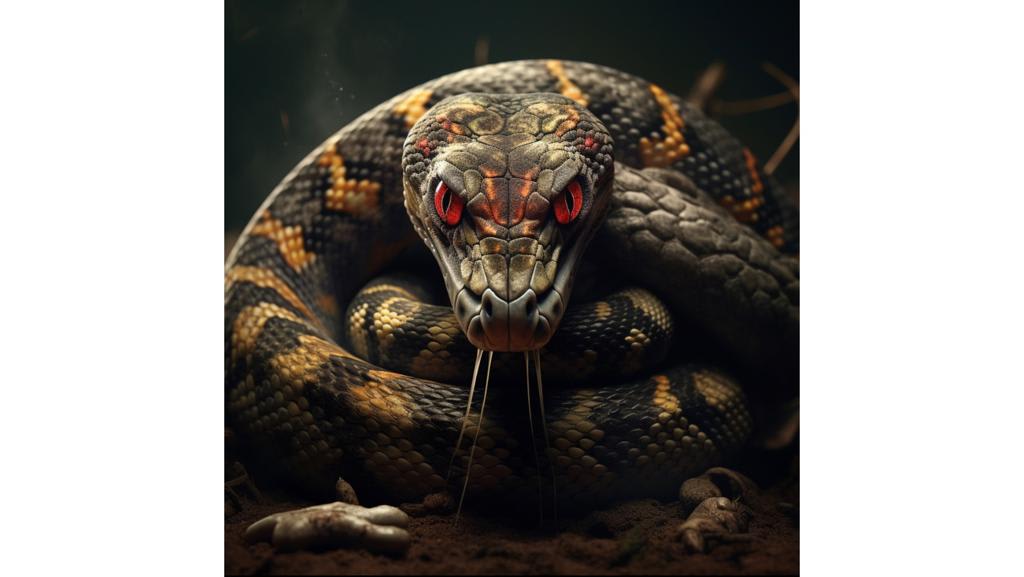The Fascinating World of Venom and Poison
Understanding Reptiles and Amphibians

Introduction:
Venoms and poisons have long captured our fascination, often making us cautious of the creatures we encounter in nature. These substances, produced by animals and plants, can range from mildly uncomfortable to lethal. While the terms "venomous" and "poisonous" are often used interchangeably, they have distinct meanings. In this article, we will delve into the evolutionary origins of venom and poison in reptiles and amphibians, exploring how these toxins are used and the consequences of their interactions with other species.
Exploring the Differences:
Venom and poison both refer to toxins created by living organisms that can harm other living beings. The key distinction lies in the method of delivery. When a toxin is actively injected through a bite or sting, the organism is venomous. On the other hand, if the toxin is absorbed through ingestion, inhalation, or skin contact, the organism is poisonous. Some creatures possess substances that can function as both venom and poison. For example, a spitting cobra's spray can poison through skin absorption, while its bite injects the same liquid as venom. Venoms are typically used for defense and hunting, while poisons are more passive and rely on touch or ingestion.
Evolutionary Arms Race: Poisons:
Many toxic reptiles carry more poison than necessary due to an evolutionary arms race. Take the cane toad as an example. Behind its ear, a gland produces a toxin called Bufo toxin, which affects the heart muscles, causing them to beat excessively until they eventually stop. This poison is fatal to most predators. However, predators like the false water cobra in Central and South America have developed resistance to cane toad poison over generations. As a response, cane toads have increased their poison production, leading to an ongoing arms race. Unfortunately, when cane toads were introduced to Australia in 1935 to control sugarcane beetles, they became an invasive species, devastating native predators, such as the shingle back skink, which lacked natural immunity.
Unlikely Allies: Poisonous Plants:
In an interesting case of convergent evolution, certain reptiles, like the shingle back skink, found an ally in the form of a poisonous plant called mother of millions. These plants produce a similar toxin to cane toads. Prior to the toads' arrival, the skinks would consume mother of millions and experience poisoning. However, some skinks survived and passed on their poison resistance to subsequent generations. In areas where mother of millions is present, the skinks have gained an advantage in the evolutionary race. Nevertheless, in other parts of Australia without such plants, the populations of blue-tongued skinks have been decimated by cane toad poisoning.
Evolutionary Arms Race: Venoms:
In the realm of venom, the king cobra stands as a prime example. As an ophiophagus, its diet primarily consists of other snakes, many of which are venomous. To survive, the king cobra not only produces its own neurotoxin but also needs to be immune to the venom of the snakes it preys upon. This leads to a continuous arms race between the king cobra and its venomous snake prey, such as the common krait. Both snakes must maintain a level of toxicity to harm each other, while simultaneously developing immunity. However, venom production is energetically expensive for snakes, requiring significant amounts of energy.
Human Involvement and Medicinal Benefits:
Humans, too, play a role in the evolutionary arms race with venomous snakes. Anthropologist Dr. Lynne Isbell's research suggests that humans have evolved better color vision and an instinctive ability to detect snakes, while snakes have developed more potent venom and better camouflage to avoid detection. Additionally, venomous animals provide us with life-saving medications. Captopril, a widely used heart failure and blood pressure medication, is derived from Brazilian pit viper venom. Yew trees produce a poison that has been utilized as a cancer medication since the 1990s. It is crucial to respect and appreciate these toxic animals for their role in the ecosystem and their potential medical contributions.
Conclusion:
The world of venom and poison in reptiles and amphibians is a captivating subject. Understanding the differences between venomous and poisonous creatures, their evolutionary arms races, and their interactions with humans provides insights into the delicate balance of nature. While these creatures inspire awe and caution, they also offer valuable contributions to medicine. By acknowledging and respecting the co-evolution of toxic animals and their environment, we can appreciate their significance in our world.
About the Creator
Enjoyed the story? Support the Creator.
Subscribe for free to receive all their stories in your feed. You could also pledge your support or give them a one-off tip, letting them know you appreciate their work.





Comments
There are no comments for this story
Be the first to respond and start the conversation.